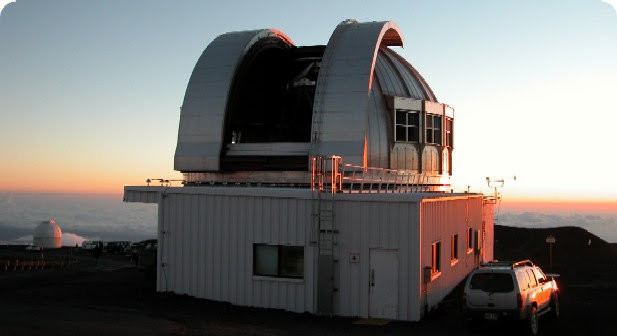 | ||
UKIRT, the United Kingdom Infra-Red Telescope, is a 3.8 metre (150 inch) infrared reflecting telescope, the second largest dedicated infrared (1 to 30 micrometres) telescope in the world. Until 2014 it was operated by the Joint Astronomy Centre in Hilo and located on Mauna Kea, Hawai'i as part of Mauna Kea Observatory. It was owned by the United Kingdom Science and Technology Facilities Council. UKIRT is currently being funded by NASA and operated under a Scientific Cooperation Agreement among Lockheed Martin Advanced Technology Center, the University of Hawaii, and the University of Arizona. The telescope is set to be decommissioned in the near future as part of the Mauna Kea Comprehensive Management Plan.
Contents
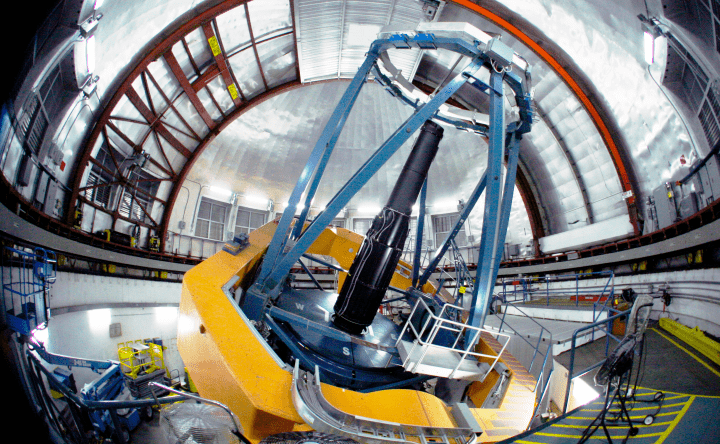
History
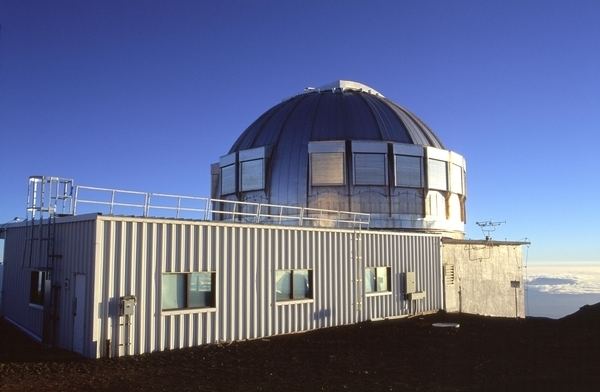
Like related telescopes on Tenerife, it is a Cassegrain device with a thin primary mirror, around 2/3 thinner than in other contemporary devices and weighing only 6.5 tonnes. The mirror is held in a massive steel 'cell' of 20 tonnes which is linked to the supports by Serrurier trusses. The instrument is held and pointed by a massive 'English Equatorial mounting' or yoke which sits on ball-bearings on steel piers, swinging east-west and rotating around north-south. The geometry of the mount limits the telescopes access to objects between +60 and -40 degrees of declination but it is extremely sturdy and free from deformation and so allows very accurate pointing. The telescope was built between 1975 and 1978; the mechanical systems were built by Dunford Hadfields of Sheffield and the optics by Grubb Parsons of Newcastle. Originally known as the Infrared Flux Collector it began operation in October 1979.

With the delivery of the wide-field imager WFCAM in 2004, UKIRT began a revolutionary large-scale sky survey (the UKIRT Infrared Deep Sky Survey, UKIDSS). This project takes some 80% of the available telescope time in wide-field mode. Wide-field takes some 60% of the telescope; the other 40% is devoted to operations with the Cassegrain instrumentation. In December 2008 it was announced that the telescope would be moving to wide-field mode full-time [1].
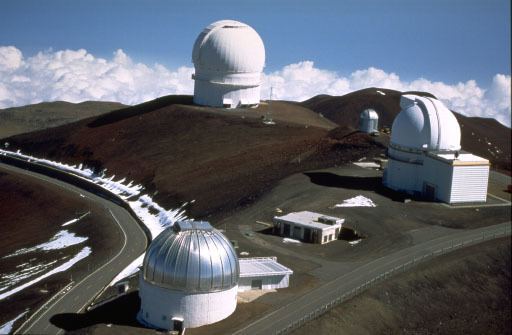
Since December 13, 2010 UKIRT is operated remotely from Hilo in a minimalist operation mode (no observers present). Most of the time is used by the UKIRT Infrared Deep Sky Survey, but some 60+ nights per year are used by Korean institutes.
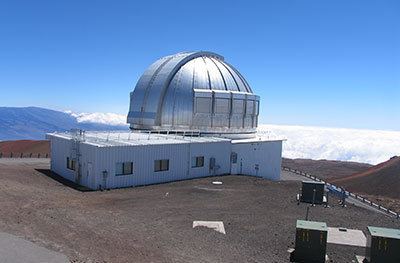
A UKIRT infrared survey was used to discover a redshift distance record breaking Quasar in 2011. The Quasar could not be seen in visible light, but could in the longer wavelengths observed by UKIRT. The UKIDSS observations allowed astronomers to find the most distant quasar in 2011. It took five years to find this item but once found, other telescopes such as the VLT further analyzed it.
UKIRT was used for UKIDSS, which provided a big improvement over 2MASS.
Instrumentation
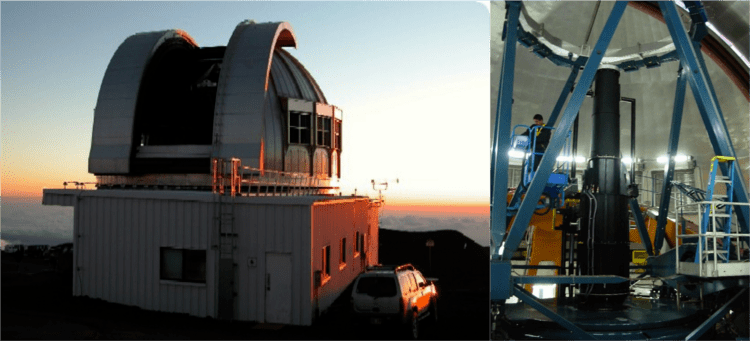
UKIRT has four Cassegrain instruments of which 3 can be on the telescope at the same time and a wide-field imager placed forward of the Cassegrain focus.
Upgrades
Though it was built inexpensively, UKIRT has been extensively upgraded. A program of improvements from 1990 to 1998 greatly improved the imaging performance, and in 2001 the telescope delivered median infrared seeing ranging from 0.8 arcseconds at dusk to 0.5 arcseconds in the early morning [2]. Between 1998 and 2003, two major software projects were undertaken - the ORAC project providing a major upgrade to the user interface and automating telescope operations, and the OMP providing a comprehensive observation database and data feedback mechanisms. Since 2003, using these two software enhancements, UKIRT has carried out highly efficient flexible scheduling - tailoring observation execution to the prevailing weather conditions. Observations are selected from the database according to the current seeing, atmospheric water vapour, sky transparency and a science priority allocated by the telescope time allocation panel.
Continuing Operations
It was announced on 16 December 2009 that the telescope is "subject to discussions leading to managed withdrawal" [3]. In 2012, its shutdown for end of the 2013 was announced. The possibility of transfer was noted as a possibility. In 2014 the telescope ownership was transferred to the University of Hawaii. It is being operated under a Scientific Cooperation Agreement among the University of Arizona, the University of Hawaii and Lockheed Martin Advanced Technology Center. Funding for operations is currently being provided by the NASA Orbital Debris Program Office. Steward Observatory at the University of Arizona is responsible for daily operations and scientific productivity. Technical support is provided by East Asian Observatory, the successor organization operating the James Clerk Maxwell telescope. In addition to NASA mission support, observing time is provided to astronomers and planetary scientists at the University of Hawaii and University of Arizona and researchers at LM-ATC. The UK continues to provide support for data pipelines and archives for the Wide-Field Camera and receives a share of the time for survey projects of joint interest.
Contemporaries on commissioning
Although seeing in the infrared, the UKIRT was large for an optical telescope and signaled a coming focus on this part of the spectrum that only grew in the coming decades. Other IR-dedicated telescopes include WIRO 2.3 in Wyoming, USA, the Gornergrat Infrared Telescope (TIRGO, 1.5 m) in the Swiss alps, and a 1.6 m at Mont Mégantic Observatory in Canada. Eventually, Britain produced VISTA, but it is in the southern hemisphere.
Here is the UKIRT (then called Infrared Flux Collector) compared to the other largest optical telescopes circa 1978, only some of these could also see in the near infrared.
